-
Stagnant U.S. funding for tools against infectious diseases leaves U.S., world at serious risk
As Congress grapples with the White House on how to fund an emergency response to fight Zika virus, a new report warns that overall underfunding for development of lifesaving tools against neglected global diseases is putting the United States and the world at risk, and that emergency funding cannot be allowed to substitute for sustained U.S. investment in research and development (R&D) of global health technologies. A recent study that examined the risk of infectious disease outbreaks projected that large-scale global disease pandemics could cost the global economy more than $60 billion a year, while investing in the interventions needed to protect against these outbreaks, including R&D, would cost only a fraction of that — $4.5 billion — each year.
-
-
Resistance-proof antiviral can treat many diseases
Scientists and health officials are marshalling forces to fight Zika, the latest in a string of recent outbreaks. Many of these efforts target that virus specifically, but some researchers are looking for a broader approach. The new strategy aims to fight a wide range of viruses that appears to be safe in vivo and could evade a virus’s ability to develop resistance.
-
-
New Yorker sentenced to 16 years for trying to buy ricin
It was a scary scenario: Chinese national Cheng Le, living in New York City, attempted to order ricin through the so-called dark Web. Ricin is a highly potent and potentially fatal toxin with no known antidote. What did Le plan to do with the ricin? Nothing good. According to U.S. Attorney for the Southern District of New York Preet Bharara, “In Le’s own words, established at trial, he was looking for ‘simple and easy death pills’ and ways to commit ‘100 percent risk-free’ murder.”
-
-
Global warming could help crops’ productivity
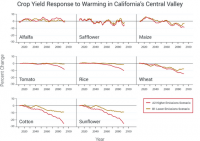
Many scientists fear that global warming will hit staple food crops hard, with heat stress, extreme weather events, and water shortages. On the other hand, higher levels of carbon dioxide — the main cause of ongoing warming — is known to boost many plants’ productivity, and reduce their use of water. So, if we keep pouring more CO2 into the air, will crops fail, or benefit? A new study tries to disentangle this complex question. It suggests that while greater warmth will reduce yields of some crops, higher CO2 could help mitigate the effects in some regions, unless other complications of global warming interfere.
-
-
Congress’ inaction hobbles U.S. preparation for a major Zika virus outbreak: Experts

Despite dire predictions that the Zika virus could affect much of the United States including large cities this summer, the country is unprepared, and the financial and moral consequences could be significant. Earlier this year, President Barack Obama requested $1.86 billion for surveillance, mosquito control, research and health services, but Congress has not approved the funding. In the absence of Congressional action, the president reallocated $589 million of designated Ebola funds to Zika preparedness, research and the creation of response teams. “The nation’s state of preparedness is compromised by Congress’s inaction on supplemental funding and the weak capacities and powers of states and localities,” two public health experts say.
-
-
Haiti’s cholera epidemic could have been prevented with low-cost approaches
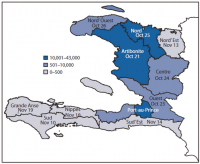
Haiti’s cholera epidemic killed close to 9,000 people and hospitalized hundreds of thousands more. The epidemic also spread to several neighboring countries. Cholera remains a critical risk for UN peacekeeping operations, years after Nepalese troops inadvertently introduced the disease to Haiti in fall of 2010 and triggered one of the worst epidemics in recent years. Researchers have found that simple and inexpensive interventions — which the United Nations has yet to implement — would be effective in preventing future outbreaks of the bacterial infection.
-
-
New way to clean contaminated groundwater

A team of researchers has helped discover a new chemical method to immobilize uranium in contaminated groundwater, which could lead to more precise and successful water remediation efforts at former nuclear sites. Uranium is present in contaminated groundwater at various sites in the United States as a legacy of Cold War-era processing and waste disposal activities associated with nuclear materials production.
-
-
Zika virus “scarier than we initially thought”: U.S. health officials
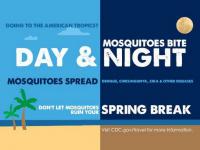
Dr. Anne Schuchat from the Centre for Disease Control and Prevention (CDC) said the Zika virus is more of a threat than previously thought. Speaking at a White House press conference, she said there was potential for the virus to spread to more U.S. states than experts first believed. “Most of what we’ve learned is not reassuring. Everything we look at with this virus seems to be a bit scarier than we initially thought,” she told reporters.
-
-
Novel alignment-free sequence descriptors in Zika virus characterization
The recent epidemic of Zika virus infections in South and Latin America has raised serious concerns on its ramifications for the population in the Americas and spread of the virus worldwide. Researchers explain their research on computer-assisted approaches toward surveillance and consequent design of drugs and vaccines to combat the growth and spread of the Zika virus.
-
-
Limited awareness or concern about Zika virus in U.S.
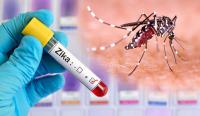
A recent survey by the Associated Press-NORC Center for Public Affairs Research finds that three-quarters of Americans who have heard at least a little about the Zika virus are aware that the virus is linked to birth defects in babies born to infected mothers. However, the survey found that most Americans are unclear about the availability of tests to diagnose Zika and whether or not preventative vaccines and effective medicines exist to treat it.
-
-
Soil’s carbon storage could help limit impact of climate change
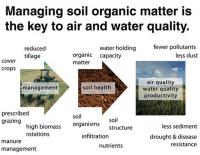
Soils currently lock away around 2.4 trillion tons of greenhouse gases, which are stored underground as stable organic matter. Researchers say the world’s soils could store an extra eight billion tons of greenhouse gases, helping to limit the impacts of climate change. Growing crops with deeper root systems, using charcoal-based composts, and applying sustainable agriculture practices could help soils retain the equivalent of around four-fifths of annual emissions released by the burning of fossils fuels, the researchers say.
-
-
Oil, gas wastewater disposal pollutes surface water, harm waterways

Unconventional oil and gas (UOG) operations combine directional drilling and hydraulic fracturing, or “fracking,” to release natural gas and oil from underground rock. This process results in in water pollution which may increase endocrine disrupting chemicals (EDCs) in surface and ground water, exposing populations living near these operations to increased risk of disease. High levels of EDC activity were found in the surface water near a hydraulic fracturing wastewater disposal facility in West Virginia. Approximately 36,000 of these disposal wells are currently in operation across the United States.
-
-
Paper-based test to help prevent food poisoning
The foodborne bacteria Salmonella alone led to nearly 20,000 hospitalizations and almost 400 deaths in 2013. Economists estimate that the treatment of all these patients and the related productivity losses cost more than $3 billion annually. And those numbers account for just one of the fifteen pathogens responsible for most of the food poisoning cases. Scientists have developed a simple, paper-based test that could help detect pathogens hitchhiking on food before they reach store shelves, restaurants and, most importantly, our stomachs.
-
-
2010 Maryland food poisoning outbreak traced to Asian strain of seafood pathogen
V. parahaemolyticusis the most important cause of seafood poisoning in the United States. Approximately 4,500 cases occur annually in the United States, according to the Center for Disease Control and Prevention. The number of cases has risen in recent years, possibly do to the warming climate.
-
-
Starvation is only one crop breeding cycle away
Global population growth, urbanization, and a changing climate mean staple food crops will need to achieve much higher yields in the near future. New research proposes genetic engineering solutions to improve photosynthetic efficiency of food crops, boosting yield under higher temperatures and carbon dioxide levels. Because it can take twenty to thirty years of breeding and product development efforts before new crops are available to farmers, those efforts must start now.
-
More headlines
The long view
Are We Ready for a ‘DeepSeek for Bioweapons’?
Anthropic’s Claude 4 is a warning sign: AI that can help build bioweapons is coming, and could be widely available soon. Steven Adler writes that we need to be prepared for the consequences: “like a freely downloadable ‘DeepSeek for bioweapons,’ available across the internet, loadable to the computer of any amateur scientist who wishes to cause mass harm. With Anthropic’s Claude Opus 4 having finally triggered this level of safety risk, the clock is now ticking.”
A Brief History of Federal Funding for Basic Science
Biomedical science in the United States is at a crossroads. For 75 years, the federal government has partnered with academic institutions, fueling discoveries that have transformed medicine and saved lives. Recent moves by the Trump administration — including funding cuts and proposed changes to how research support is allocated — now threaten this legacy.
Vaccine Integrity Project Says New FDA Rules on COVID-19 Vaccines Show Lack of Consensus, Clarity
Sidestepping both the FDA’s own Vaccines and Related Biological Products Advisory Committee and the CDC’s Advisory Committee on Immunization Practices (ACIP), two Trump-appointed FDA leaders penned an opinion piece in the New England Journal of Medicine to announce new, more restrictive, COVID-19 vaccine recommendations. Critics say that not seeking broad input into the new policy, which would help FDA to understand its implications, feasibility, and the potential for unintended consequences, amounts to policy by proclamation.
